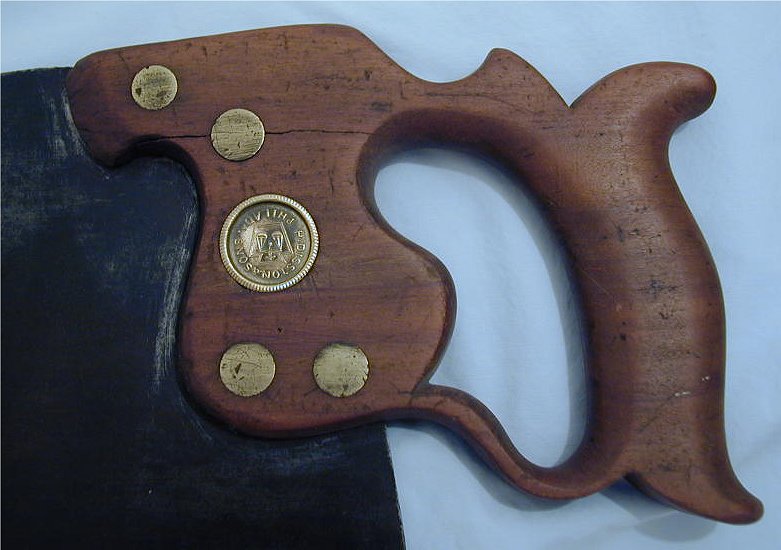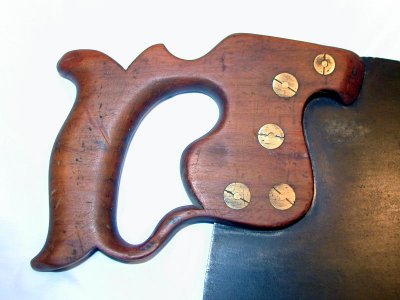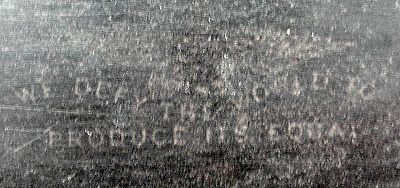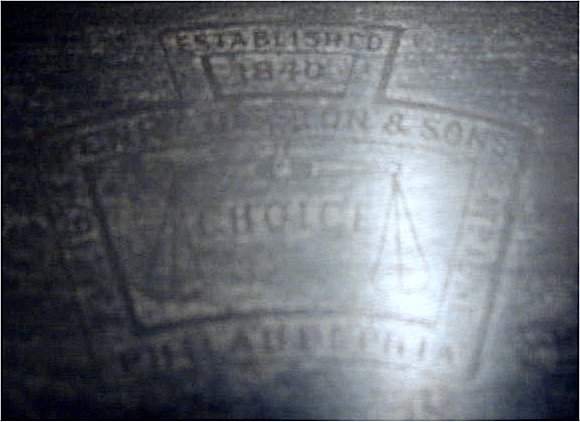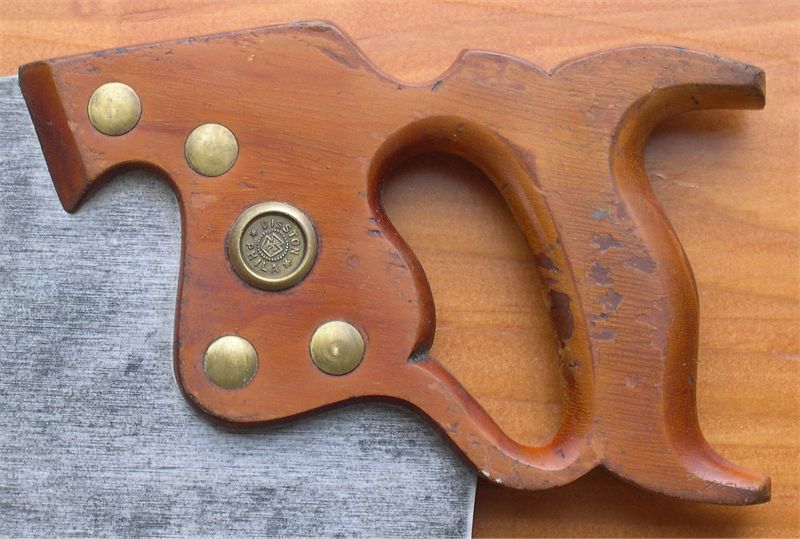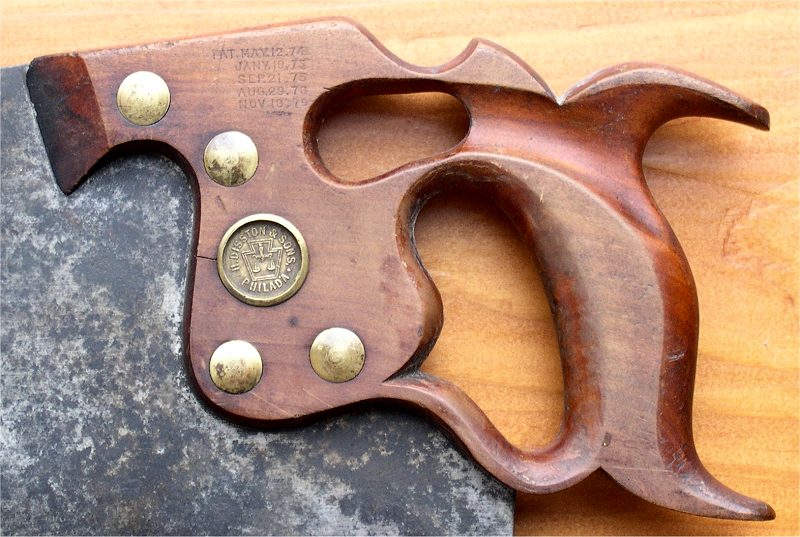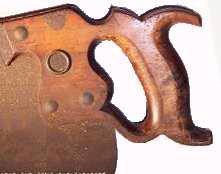Disston D-8 Handsaws

D-8 Handsaw

D-8 Handsaw with Thumbhole Handle for Two-Handed Use
| |||||||||
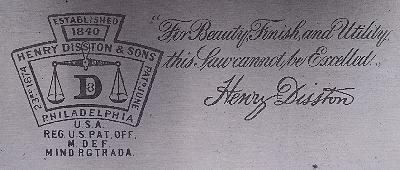
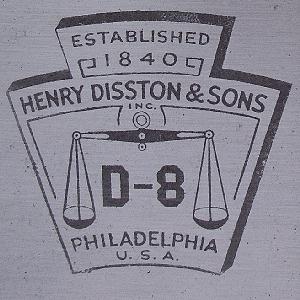
The D-8 legend goes: Henry Disston sketched his design on the factory floor to show his engineers what he had in mind. The theory put forth by the company in 1874 advertising was that the "peculiar formation of the blade actually stiffen[s] and strengthen[s] it in a remarkable degree." Just how less steel makes the blade stiffer and stronger is a good question, and by 1918 Disston's catalog said exactly the opposite:
Male thrust pressure aside, the skewback is a good looking saw. The two photos of etches show the D-8 etch: the left one is before 1928, the one on the right is after 1928."The advantage of one over the other is almost entirely a matter of personal preference. The skew-back blade is slightly lighter in weight. |
|
The D-8 was the first Disston saw to use the letter "D" in its designation. The D-8's handle (and that of the No. 120 ACME) had the unique "cover-top" feature for decades before any other saw. It was not open at the top like other handles, providing an additional surface on which the blade would bear, making the fit of the handle tighter and preventing rocking of the blade within the handle. Other Disston saws adopted the feature in 1928, but the D-8 and No. 120 had it first, beginning in 1875. |
|
|
|
D-8 panel saws were available in lengths from 16 to 24 inches at different times over the course of the saw's manufacture. |

|
|
The most obvious feature of some D-8's is the extra hole in the handle. Offered on 26" and longer ripsaws from the about 1880 until about 1950, the Dual-Grip or thumbhole-handled saw was designed for those laborious rip cuts. The handle is gripped normally with the lead hand and the thumb of the second hand is put through the thumbhole. The fingers of the hand are then wrapped across the top of the saw handle.
The thumbhole handle was also offered on 28" and 30" crosscut saws for a time, although its usefulness on a crosscut is questionable. When crosscutting wood with the saw, your other hand normally would hold the board. The hole for your lead hand is smaller than normal saws, making it necessary to hold the saw with three fingers in the hand hole. This was considered the proper method to grip a handsaw at the time. If you are left handed, the handle was not designed with you in mind, as it is not symmetrical. That said, it's an interesting design, and every collector seems to have one. Similar handles were put on D-100 and No. 120 "Acme" saws as well. |
|
|
|
For a time in the late 1870's and early 1880's, Henry Disston and Sons exhibited their fierce protection of patents related to their saws, which were copied by other manufacturers. Patent dates were stamped into the wood of this D-8 saw and some Centennial-handled No. 7 saws.
The five dates shown are as follows: |
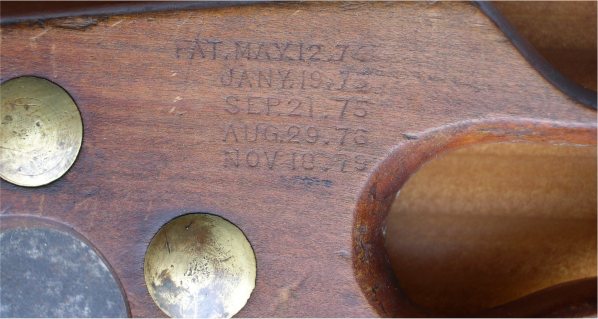
|
|
This is the typical D-8 handle after 1928, with the color varying with the wood species and coloring under the lacquer. Handles can be anywhere from blonde to brown to red, depending on when it was made. The handles were apple until about 1947, when they were changed to beech, as these handles demonstrate. The D-8 was sold until shortly after the acquisition of Disston by HK Porter in 1955.
|
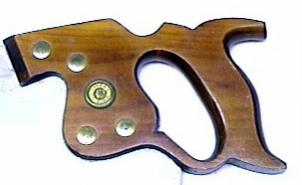
|
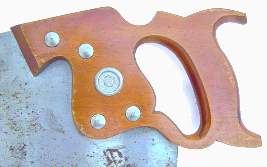
|
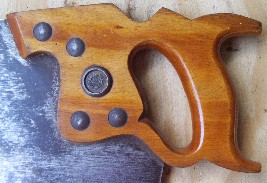
|
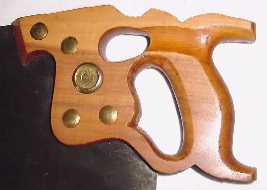
|
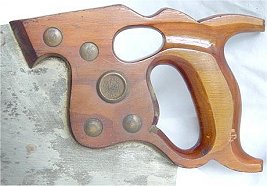
|
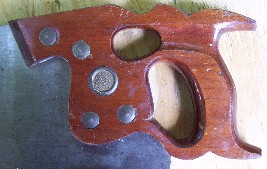
|

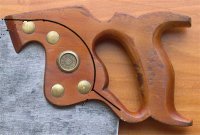 The shape of the D-8 saw and the angle of the handle still look modern over 125 years after they were designed. The applewood handle places the user's hand closer to the work and at a more comfortable angle for the wrist.
The shape of the D-8 saw and the angle of the handle still look modern over 125 years after they were designed. The applewood handle places the user's hand closer to the work and at a more comfortable angle for the wrist.